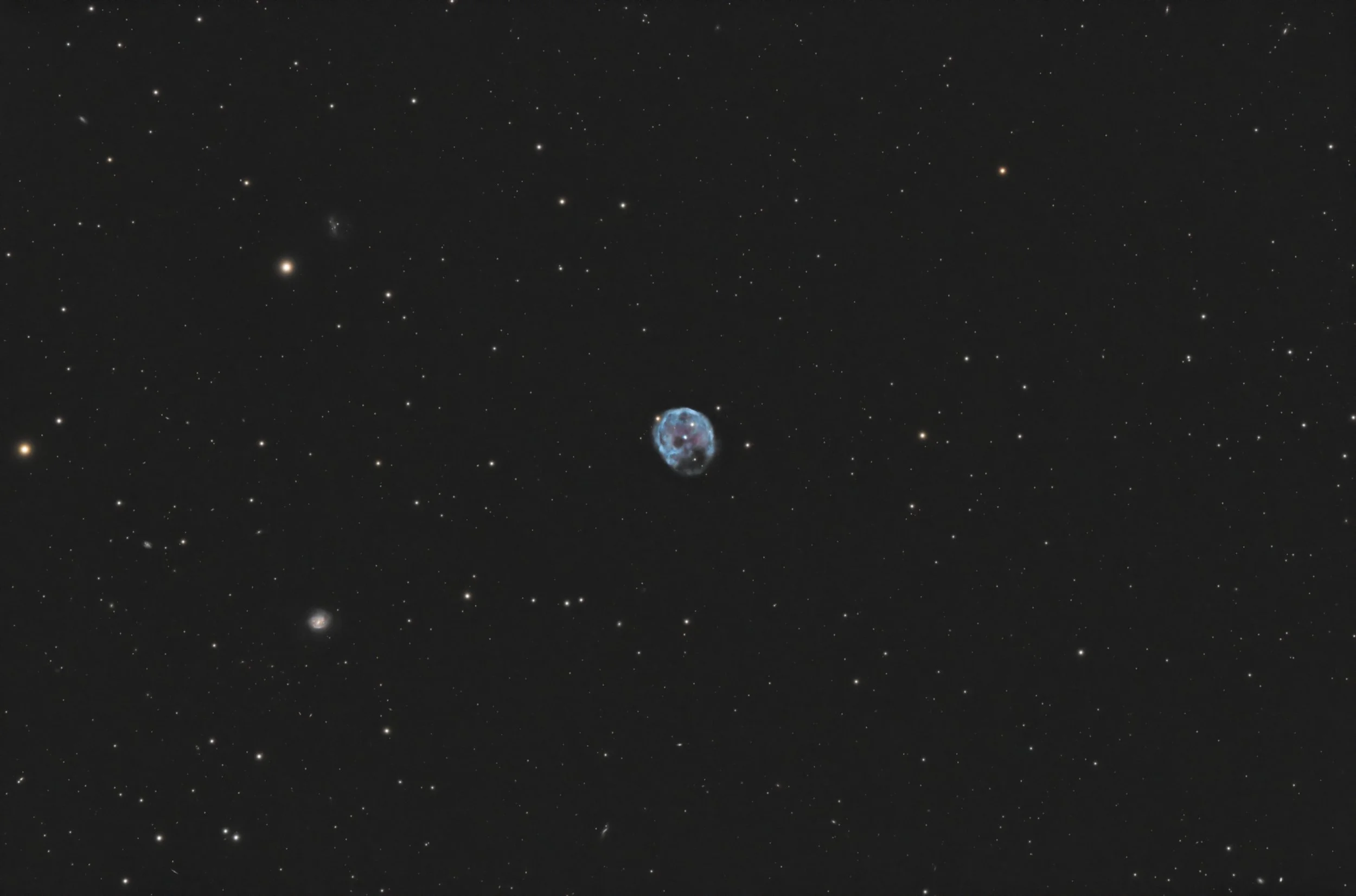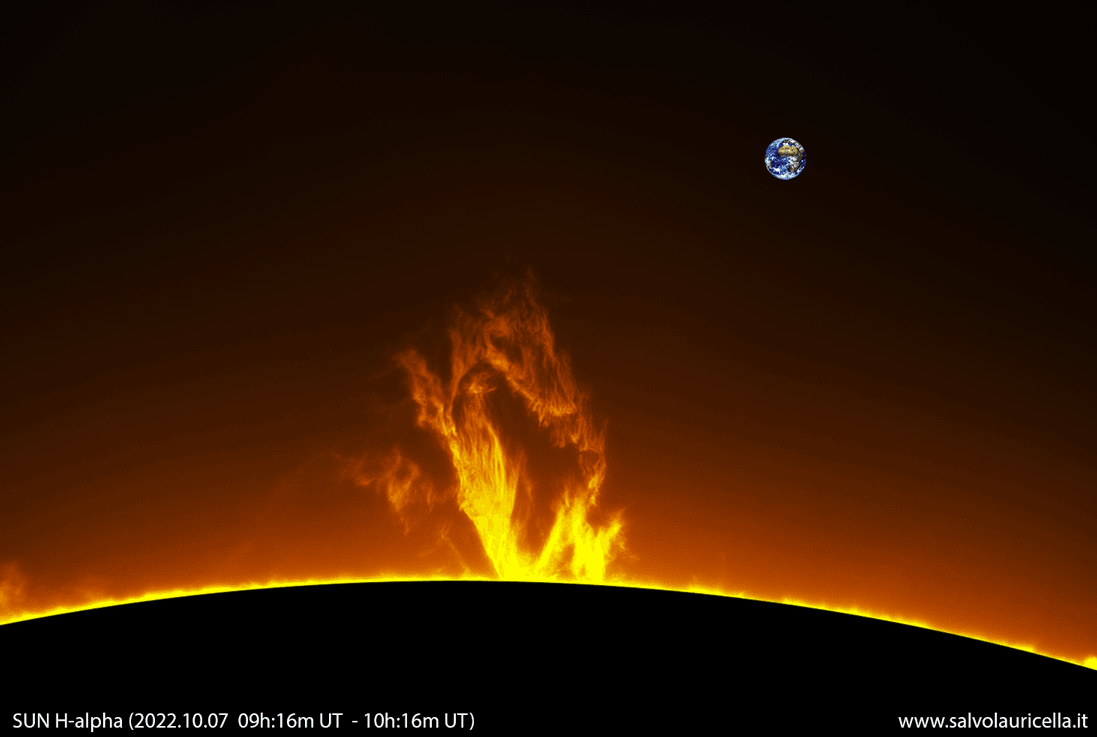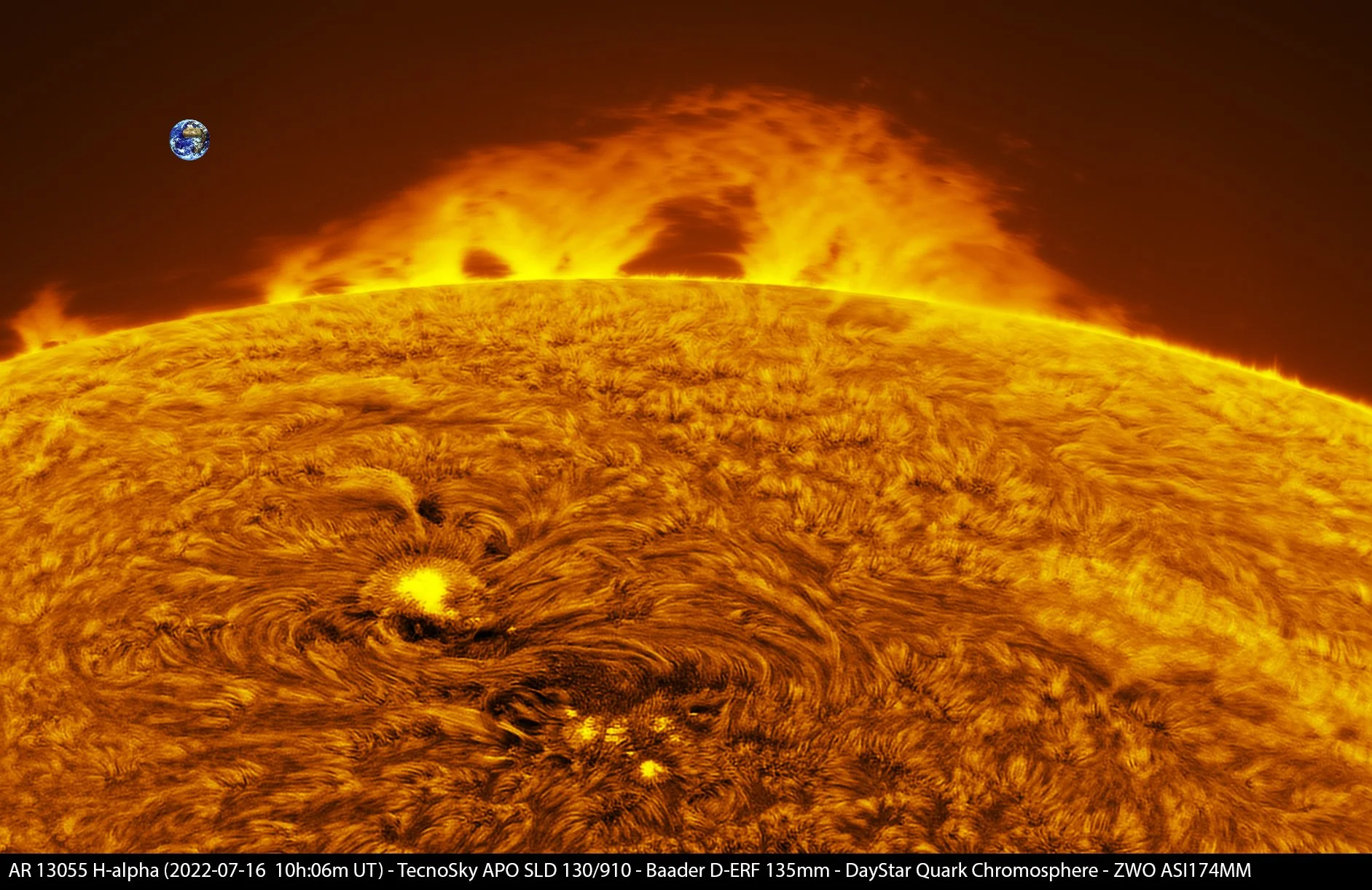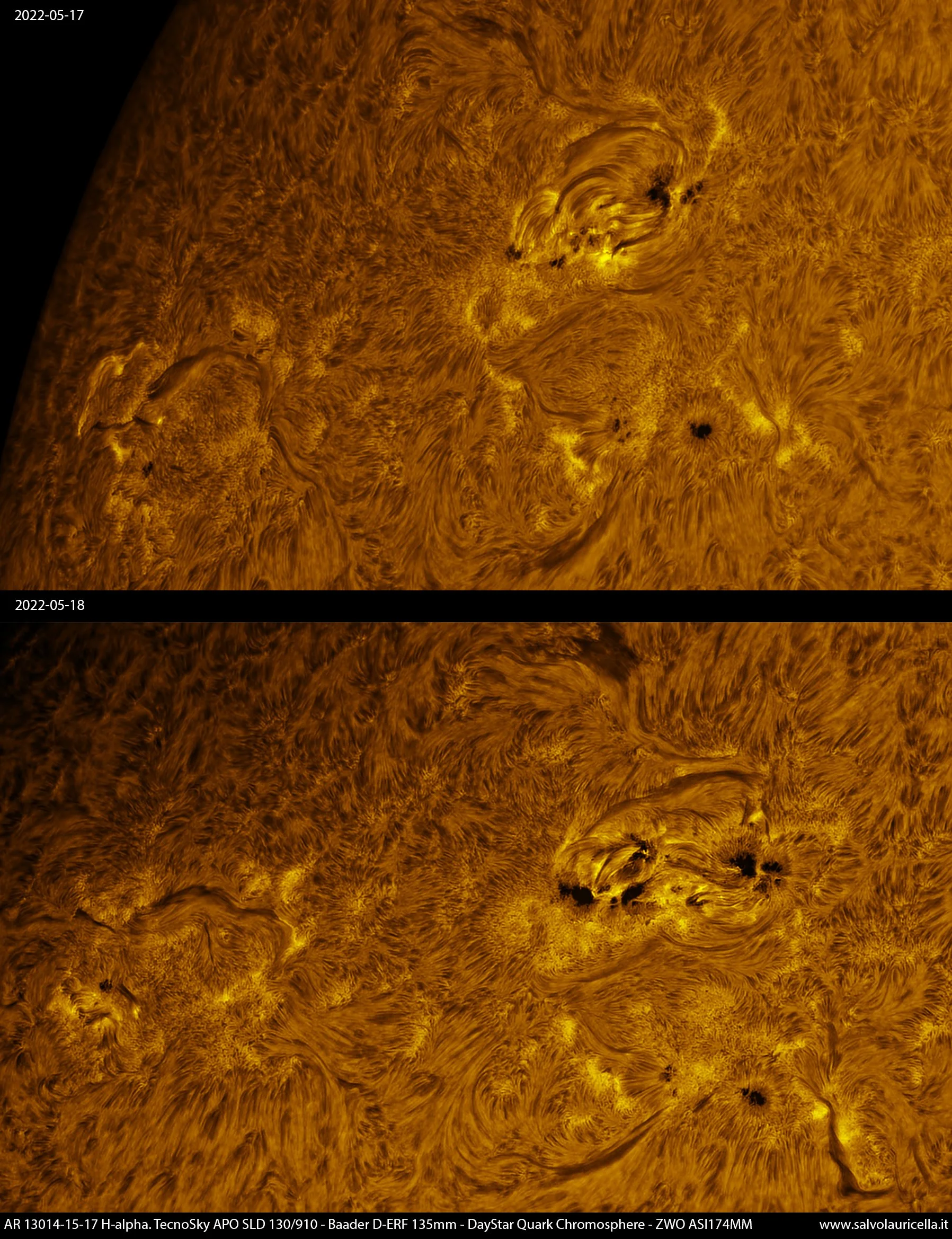
AAPOD2 Image Archives
Fleeting Giant – Solar Prominence
This image captures a towering solar prominence in rapid evolution—an immense arc of plasma extending from the Sun’s limb and suspended by magnetic fields. Estimated to reach a height of around 150,000 kilometers, the prominence appeared suddenly and vanished within minutes, a dramatic display of solar dynamics unfolding in real time.
Such prominences are composed of relatively cool, dense plasma compared to the surrounding corona and are often associated with solar flares and coronal mass ejections. This fleeting structure, visible only for a short time, is a powerful reminder of the ever-changing and energetic nature of our Sun.
Loop prominence
In the dynamic theater of the solar atmosphere, a captivating image captures the intricate dance of a solar loop prominence, adding a dramatic flair to the ever-changing canvas of our sun. This celestial ballet unfolds in the chromosphere, where magnetic forces sculpt vast arches of hot, ionized gas that leap and twirl against the solar disk.
This particular solar loop prominence, suspended by magnetic fields, manifests as a luminous arc reaching out from the sun's surface. The image not only showcases the aesthetic beauty of this solar feature but also provides a glimpse into the underlying astrophysical processes at play. As charged particles traverse magnetic highways, their graceful choreography is frozen in time, revealing the intricate dynamics that shape the sun's outer layers. Observing such solar phenomena not only captivates the eye but also deepens our understanding of the sun's complex and ever-active nature, highlighting the delicate balance between gravitational forces and magnetic influences on our closest stellar neighbor.
NGC 246 - Skull nebula
NGC 246, famously known as the "Skull Nebula," derives its popular name from its distinctive appearance, resembling a human skull or a spooky visage when observed in certain conditions. This nebula is an open cluster embedded in a cloud of interstellar gas and dust, located in the constellation Cetus.
The Skull Nebula, designated as Caldwell 56, showcases intricate details when viewed through telescopes equipped with narrowband filters that enhance the contrast of the nebula's features. It's important to note that the perception of a skull-like shape is often subjective and depends on factors such as the observer's imagination and the quality of the observing conditions.
NGC 246 stands out not only for its captivating appearance but also for its scientific significance, offering astronomers valuable insights into the processes of star formation, interstellar dust, and the life cycle of open star clusters within our Milky Way galaxy.
Prominence evolution
Prominence evolution (07/10/2022) from 09h:16m UT to 10h:16m UT
iOptron CEM70G, Tecnosky APO SLD 130/910, Baader D-ERF 135mm, Daystar Filters Quark Chromosphere, ZWO ASI174MM
Copyright: Salvo Lauricella
Huge solar prominence
Image Description and Details : Huge solar prominence; the active region 13055 is visible on the disk. The image of the Earth was inserted for comparison. Setup: Tecnosky APO SLD 130/910, Baader D-ERF 135mm, DayStar Quark Chromosphere and ZWO ASI174MM camera.
Copyright: Salvo Lauricella
Active regions comparison
Image Description and Details : Active regions in comparison. The images were taken on May 17 and 18, 2022. Setup: apo refractor 130/910, D-ERF 135mm filter, DayStar Quark Chromosphere and ZWO ASI174MM camera.
Copyright:Salvo Lauricella
Sun comparison in Cak and Hydrogen Alpha
Sun in CaK and HA
TS 80ED f/7, Lunt modulo CaK B1200, Lunt LS60THa/B1200, Grasshopper3 GS3-U3-28S4M.
A comparison between FD Cak and H-Alpha taken 1/9/2020. I used a Lunt LS60THa/B1200 and a TS 80ED f/7 with a Grasshopper3 GS3-U3-28S4M.
Copyright: Salvo Lauricella








